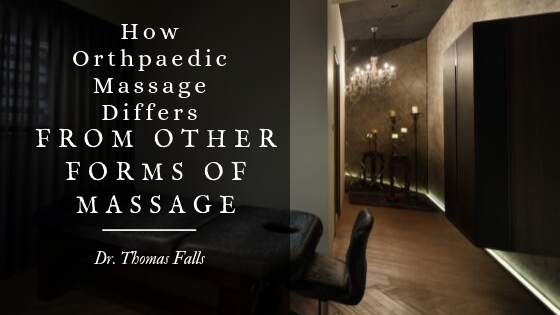You may have heard of the term ‘Orthopaedic Massage’ before but what does it actually mean? Orthopaedic massage differs from other forms of massage in very specific ways. If you or someone you know is thinking about getting an orthopaedic massage or any other type of massage, it is important to know the differences between each type of massage. This article will talk about the similarities and differences of orthopaedic massage to other forms of massage therapy.
Massage Therapy
Normally, when people think about getting a massage, images of a relaxing spa may come into their minds. Swedish massage is one of the most common forms of massage and generally is what people think of when they think of massage therapy. Swedish massage is aimed to relax muscles and joints while also improving flexibility and reducing physical and emotional stress. Increased blood flow and oxygen to the muscles help people get rid of lactic acid that may have been building up in their muscles over time. Similarly, deep tissue massage is another common form of massage that many people associate massage therapy with. Deep tissue massage is aimed at releasing tension in deeper parts of the body such as the connective tissue. Deep tissue massage tends to be more intense than a swedish massage because of its overall goal. Some individuals may experience pain during a deep tissue massage and also be sore afterwards because of untreated muscle groups within the body. Although swedish and deep tissue massage are great forms of massage, orthopaedic massage serves a more particular purpose to individuals.
Orthopaedic Massage
Orthopaedic massage differs from other forms of massage because of its intent and a sometimes lengthy evaluation process. The goal of orthopaedic massage is to reduce pain in certain areas, restoring structural balance in the body, and prevention from any further musculoskeletal dysfunctions. Sports injuries or chronic pain are a common reason why individuals would receive an orthopaedic massage. A good example of why an individual or an athlete would receive an orthopaedic massage is through an ACL tear. An ACL tear could result in one of two outcomes, the first being a surgical procedure, and the second being orthopaedic massage. This example sheds light on how orthopaedic massages differ from other forms of massage because of the specificity of the injury and the massage treatment that follows it. An orthopaedic massage therapist would have a substantial understanding of the musculoskeletal system and specific movements and treatments to treat pain within that system.
All forms of massage therapy is good for muscles and stress.

